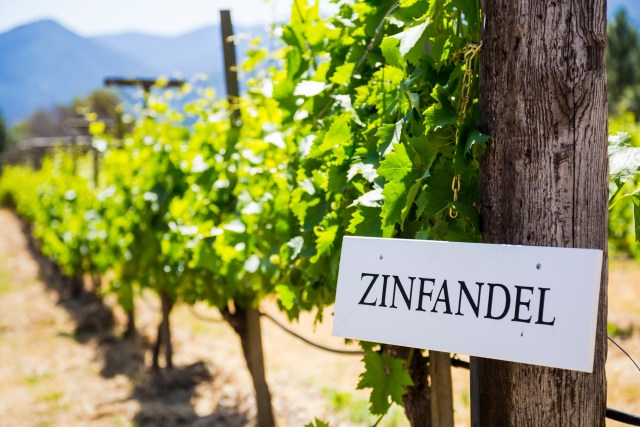If you haven’t been able to tell by now, I’m a big fan of Grgich Hills wine. I’m particularly partial to their Cabernets, which I find put the intimidating “Napa Cab” stereotypes to rest. But their Zinfandels come in at a close second. Last year’s vintage had me taken aback, as the Zinfandel’s disparate flavors and textures seemed to, in the end, create a seamless journey. This year, those flavors and textures seem to come together creating a rounder, fuller-figured wine, a more cyclical story — and quite an enjoyable drinking experience.
Tag: red wine
Zinfandel: California’s ‘Native’ Grape
It makes sense that Zinfandel has gained a reputation as California’s “heritage grape.” For many years, Zinfandel’s exact origins remained a mystery, or, as Jancis Robinson calls it, “a romantic thriller.” The red grape seemed to have made the trek and set fresh roots in the Golden State in conjunction with the forty-niners seeking their fortune in gold. Here, when the search for treasure proved fruitless, settlers turned to farming — and the Zinfandel grape thrived more than the Gold Rush ever could. Fields of vines flourished throughout the Sierra Foothills, and wine — namely jug wine — became a household staple and a new California industry.
With no known parentage and no knowledge of how the red wine grape arrived in the States in the first place — Zinfandel became California’s “wine child.”

Mt. Beautiful 2015 Pinot Noir
New Zealand’s winemaking history dates back to the colonial days, when the British first settled on the tiny island. But it wasn’t until the 1960s and into the 1970s that New Zealand became a presence on the winemaking map. At this time there was an influx of New Zealanders traveling abroad to Europe, experiencing the wines and vines of that continent, and bringing home with them the knowledge and the passion to put their own “kiwi” twist on the Old World’s drink.
Though the New Zealand wine industry is quite tiny, producing less than 1% of the world’s wine, it is home to 11 different wine regions. And while the country’s “claim to wine fame” may be Sauvignon Blanc (indeed, nearly 70% of New Zealand’s vines are planted to the white grape, totaling about 200,000 tons harvested each year), there are certain regions where other grapes — like Pinot Noir — can claim a small kingdom. 
Boyer 2016 Pinot Noir
Thanks to the movie Sideways, Santa Barbara is probably one of the most popular Pinot Noir regions in our Golden State. But regardless of what you think of the film, Santa Barbara has earned its positive reputation. Something about the consistently cool climate, the sedimentary sea-influenced soils, not to mention the winemaking culture in the area — it all seems to create the perfect Pinot atmosphere. As Karen MacNeil says, “Within an hour of being in the South Central Coast, you’re so mellow that drinking really good Pinot Noir strikes you as a constitutional right.” I’ll pledge allegiance to that…
Raeburn Winery 2016 Pinot Noir
Raeburn is a name you’ll see on the shelves of your local grocer — but did you know that the name Raeburn comes from an Olde English word meaning “the river where one goes to drink?” And so I think it is fitting that this Pinot Noir represents the Russian River Valley in my Pinot Noir style spectrum. Characterized by its cool, maritime climate that’s funneled in through the Petaluma Gap from the Pacific Ocean, the Russian River is an idyllic place for picky Pinot. The AVA is also home to some unique soil types, including the Goldridge Soil (volcanic rich soil), Sebastapol Soil (clay rich soil), as well as alluvial soils along the benchland — meaning the Russian River, itself, can have an interesting range of Pinot Noirs.


